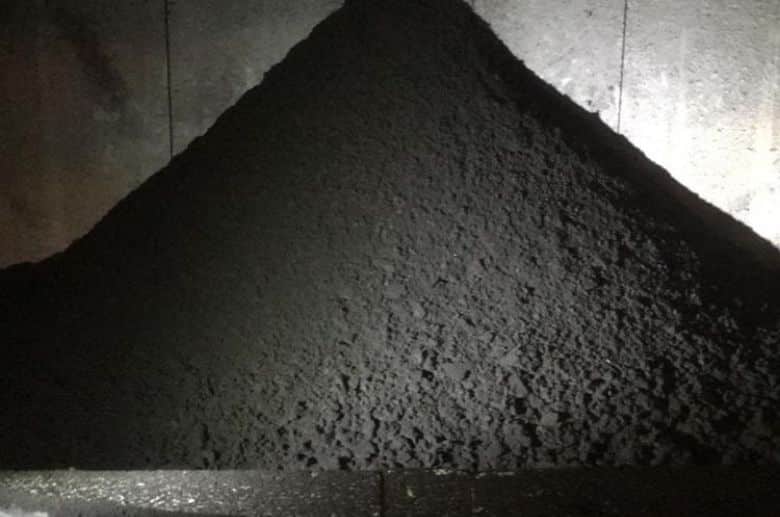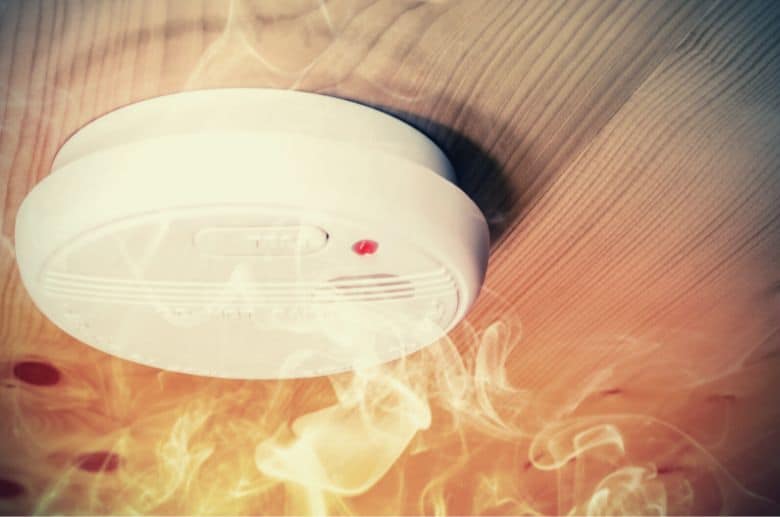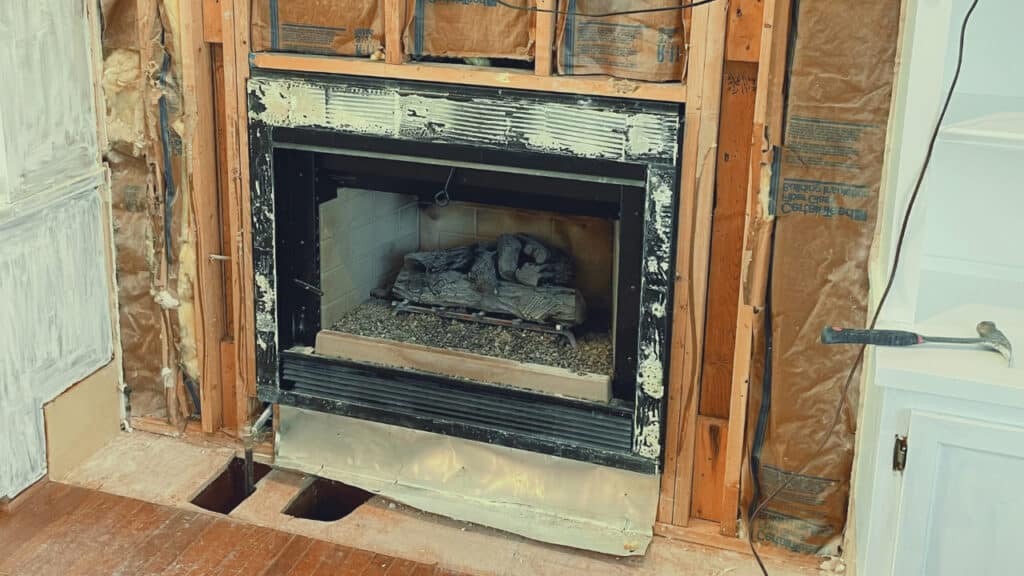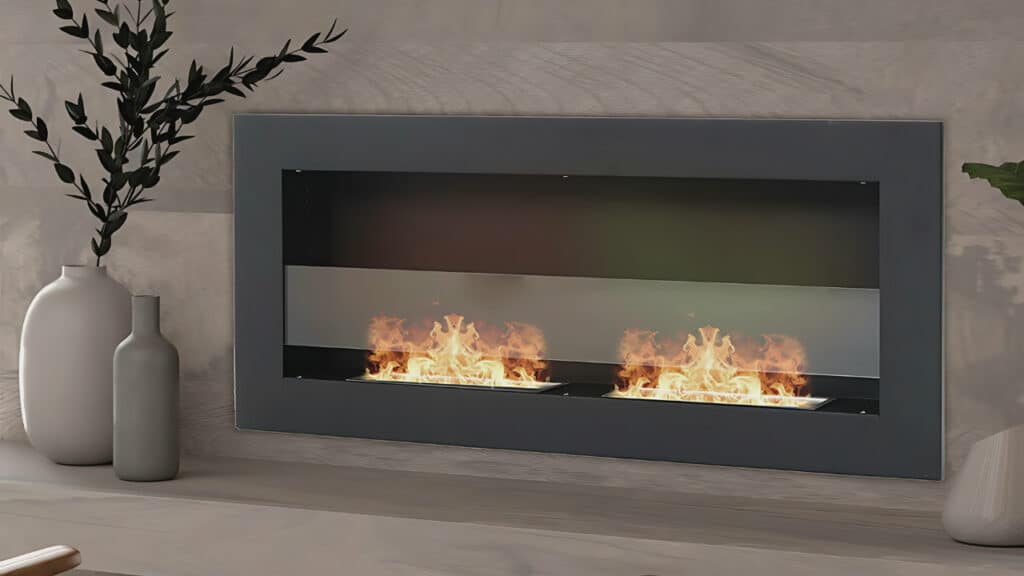The fireplace is the focal point of the home for many people. The heat it produces helps keep your house warm and cozy, especially during the chilly winter.
Unfortunately, many homeowners neglect their chimneys until substances like soot and creosote build-up. Creosote is a health hazard and is known to cause deadly chimney fires.
A National Fire Protection Association (NFPA) survey showed that a dirty chimney was the main factor contributing to home heating fires (30%).
In this post, we will discuss the risks posed by a dirty chimney, signs of an untidy chimney and some tips on cleaning a dirty one. Without further ado, let’s get started.
What is considered a dirty chimney?

A dirty chimney is characterized by the accumulation of creosote, soot, and other debris like bird droppings and leaves in the flue liner and other parts of the chimney like the firebox.
If your chimney is dirty, it will not work efficiently. Starting a fire and maintaining it will be difficult and that’s why you need to clean your chimney regularly.
Creosote, a tar-like substance, is one of the major signs of a dirty chimney.
But where does creosote come from? When wood is burning in the fireplace, byproducts of combustion, like smoke and unburned wood particles, escape from the fireplace through the chimney flue.
Incomplete combustion usually happens when there isn’t enough oxygen in the fireplace. As the smoke and other combustion byproducts move up the flue, they cool down and mix with moisture to form creosote, a black or dark brown sticky substance. Creosote formation happens in three stages:
Stage 1 – A flaky substance that’s easy to clean off your chimney forms.
Stage 2 – It morphs into a sticky substance that is difficult to brush off.
Stage 3 – Creosote hardens. At this stage, we recommend contacting a professional chimney sweep to help you remove it from your chimney.
Soot is another combustion byproduct that can make your chimney dirty. It is made up of unburned carbon particles and appears as a black, powdery substance. Other elements like animal droppings and debris like leaves can also make your chimney dirty.
——
Do You Need to Hire Chimney & Fireplace Expert?
Get free quotes from qualified experts near you. No commitment required!
——
Common Dangers involved with a dirty chimney
If you have a dirty chimney, it’s not just the dirt you will have to deal with. A dirty chimney poses a lot of risks. Let’s take a look at them.
1. Chimney Fire

Creosote and debris buildup is one of the leading causes of dangerous chimney fires. This is because creosote is a highly flammable substance.
If you let creosote accumulate, you are courting danger. The flue lining and masonry can only handle a certain level of heat.
So when there is excessive creosote, a chimney fire can start and damage the chimney structure. After a chimney fire, many homeowners spend thousands of dollars rebuilding their chimneys.
Also, when there is a chimney fire, wooden items and other combustibles are at risk of destruction. If you notice creosote or debris buildup in your chimney, get in touch with a certified chimney sweep immediately.
2. Fireplace back puffing
Fireplace back puffing occurs when your chimney cannot exhaust combustion byproducts well. The main reason is the buildup of creosote and other debris like nesting materials.
Over time, these materials accumulate and leave only a small opening for combustion byproducts to escape. The result is the smoke and fumes coming back into your room, leading to a smoky smell.
3. Health Issues
Creosote and soot exposure is harmful to your health. If you allow these substances to accumulate in your chimney, be ready to deal with the following side effects:
Respiratory issues – Inhalation of creosote leads to respiratory problems. People with asthma and other respiratory conditions are more susceptible to creosote-related lung problems. Call a qualified chimney sweep right away if you notice creosote buildup in your chimney.
Skin Irritation and rashes – This can happen when you have direct contact with creosote. Avoid leaving your skin bare when attempting to remove creosote.
Eye Irritation – If creosote particles fall into your eyes or around them, you will experience a burning sensation.
Vision loss – When creosote debris gets into your eye and you rub it, it could lead to vision loss.
Seizures – Long-term exposure to creosote can trigger seizures.
Cancer in rare cases – Some studies indicate that exposure to creosote can cause skin cancer.
4. Carbon Monoxide Poisoning
Incomplete combustion because of a dirty chimney causes the production of carbon monoxide, an odorless, tasteless, colorless gas.
Some side effects of carbon monoxide poisoning include heart problems, headaches, fatigue, nausea, and brain damage. At times, exposure to carbon monoxide can cause death.
5. Histoplasmosis

Histoplasmosis is a condition caused by a fungus known as Histoplasma. This fungus is found in bird droppings and can be right in your home! Birds can nest in your home, especially if you have a damaged or missing chimney cap or crown. Over time, your chimney will be full of bird droppings.
Common side effects of histoplasmosis include appetite loss, fever, chest pains, and persistent coughs. You can avoid this health condition by removing all the animal droppings in your chimney.
Signs of a dirty chimney

As you can see, you have numerous reasons for keeping your chimney clean. But how do you know if your chimney is dirty? Here are some obvious signs:
- Look out for creosote, a black or dark brown tar-like substance. It usually forms in the flue liner or inner walls of the chimney.
- Check for soot, a black powdery substance that accumulates in the flue liner and fireplace area.
- Check for animal droppings on the fireplace floor, fire grate and the inside walls of your chimney. You will also know animal droppings by the bad smells they produce.
- Debris-like leaves and twigs in the fireplace.
How often should a chimney be cleaned?
Your chimney should be cleaned regularly to continue functioning efficiently, prevent creosote-related medical conditions, and keep your home safe from fires.
The NFPA recommends cleaning your chimney annually. Contact a certified chimney sweep and schedule a yearly chimney cleaning and inspection.
Prevention tips to avoid dirty chimney risks
Use the following tips to prevent the risks associated with a dirty chimney:
Install carbon monoxide detector

Knowing if carbon monoxide is leaking into your home is difficult as it is an odorless and colorless gas.
The device will alert you whenever there are high carbon dioxide levels in your home. If you notice many alerts, your chimney is probably dirty and cannot exhaust carbon monoxide and smoke properly.
Do it yourself (DIY) Cleaning method
If you see signs of dirt in your chimney, you can try to clean it yourself.
Follow these steps to remove dirt from your chimney:
Step 1 – Ensure you have the right tools and equipment. These include a flue liner brush, safety harness, safety goggles, duct tape, poly sheeting, noodle brush, dust mask, and drop cloth.
Step 2 – Inspect your chimney. Check for signs of a dirty chimney, such as a black sticky substance (creosote) and bird droppings. You can use a flashlight to check the area above the damper for creosote and soot buildup. If there is excessive accumulation, call a chimney sweep to help you clean it off.
Step3 – Protect items in the house, as cleaning your chimney can cause soot and other debris to spread throughout your room. Use materials like poly sheeting to cover everything in the house.
Step 4 – Clean the dirty chimney flue using a long brush. Move it up and down, and use your flashlight to check the areas of the flue liner that are still dirty. Remember, the brush you use to clean your flue isn’t the same one you would use to clean the firebox. Ensure you research the different types of brushes before purchasing and using them.
Step 5 – Use a ladder to climb up the roof and clean the upper sections of the chimney.
Cleaning the chimney yourself may sound easy in theory, but it is usually not, especially if you don’t have the time and patience.
The job can be messy, and you risk contracting diseases if you don’t have the necessary safety gear like a dust mask and goggles. You also risk falling and getting severe injuries if you don’t have the right equipment for climbing up the roof.
We recommend calling an experienced chimney sweep to inspect and clean your chimney at least once a year. Note that you are not safe if you rarely use your chimney. Bird droppings and other debris are health hazards, so it is important to stay safe by scheduling yearly chimney inspections.
Conclusion
The chimney is a vital item in your home. Keeping it clean ensures it performs its functions and keeps you safe from health problems and dangerous house fires. Arrange for yearly cleaning and inspections to keep it in excellent condition.






